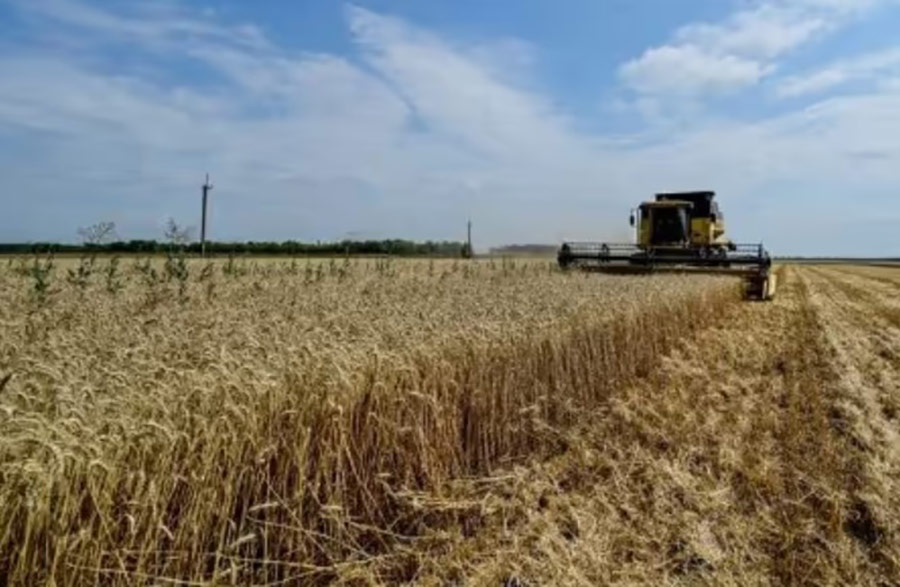KYIV/PARIS- Ukraine’s efforts to revive sea exports in defiance of Russia’s military blockade have given a glimmer of hope to a teetering farm sector in which loss-making producers are abandoning some land in one of the world’s biggest grain belts.
With no end in sight to the war with Russia, access to the Black Sea is critical if Ukraine is to preserve an agricultural industry that was the fourth-largest grain supplier globally before the conflict and in value terms accounted for half of Ukraine’s total exports last year.
While makeshift export routes and abundant supply elsewhere have tamed record global food prices since last year, the strain on Ukrainian agriculture has worsened as a UN-backed export deal collapsed and EU neighbors baulked at land shipments.
Agriculture has suffered losses of over $25 billion since the war began, Ukrainian grain trader association UGA estimates.
Ukraine’s grain exports so far in the 2023/24 season that started in July are running 28 percent below the year-earlier volume, according to agriculture ministry data.
The area planted with corn, its flagship grain export, has shrunk by a quarter since the start of the war and total crop planting could suffer a double-digit decline in 2024, producers say, as cash-strapped farms leave some land idle.
A new Black Sea shipping channel may offer a lifeline, like for Ukraine’s depleted steel industry.
“The sea corridor is essential for Ukrainian farming to survive,” Jean-Francois Lepy, head of grain trading at French agribusiness group InVivo, said.
“Without a corridor there is going to be a serious problem in 2024/2025,” he said on the sidelines of this month’s Global Grain conference in Geneva.
The “humanitarian corridor” established by Ukraine’s military in late August has expanded steadily, with Kyiv estimating over 3 million tons of grain shipped so far.
Its future remains clouded by military risks, with several vessels struck by mines or missiles, but Ukrainian producers are encouraged.
“It gives us breakeven because before the ports opened almost everyone was loss-making,” Dmitry Skornyakov, CEO of farm operator HarvEast.
Ukrainian producers see scope to reach 2-2.5 million tons of monthly grain exports through the corridor, which combined with volumes through land routes and transhipment via the Danube river could bring overall trade back towards a pre-war rhythm of 5-6 million tons per month.
Spike Brokers, which tracks exports in Ukraine, said on Nov. 1-17 Ukraine exported 404,000 tons of agricultural goods via the Danube and 352,000 tons from Black Sea ports.
An additional 943,000 tons should leave from Black Sea ports and 464,000 tons from the Danube by the month-end. – Reuters





